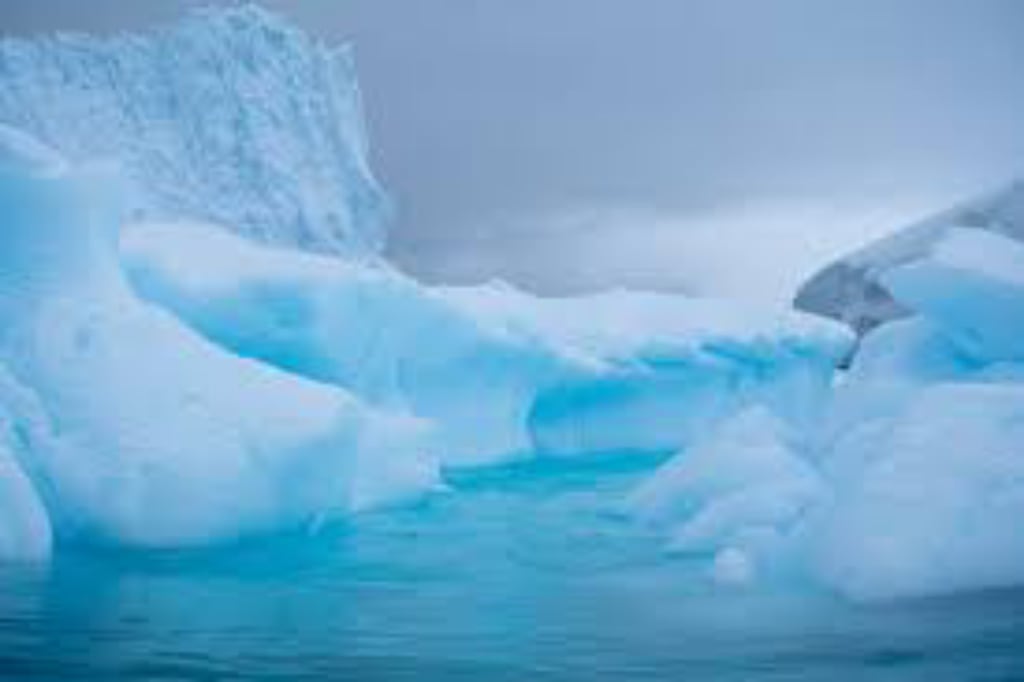Uncovering the Antarctic Tipping Point: A New Ice Melting Mechanism that Could Reshape Climate Models
Scientists Discover Previously Undetected Ice Melting Mechanism Beneath Antarctica

Conclusion In a groundbreaking discovery, researchers have identified a new Antarctic tipping point that reveals previously undetected ice melting mechanisms. This finding has profound implications for our understanding of climate change and its potential impacts on global sea levels. Hidden Threat Beneath the Ice.For years, scientists have studied the melting patterns of Antarctica's ice sheets, recognizing the role of surface warming and ocean temperatures. However, recent research has uncovered an additional, hidden threat: warm water flowing beneath the ice sheets. This subsurface melting mechanism was not accounted for in existing climate models, making this discovery both alarming and crucial for future predictions.The study, conducted by an international team of glaciologists and climate scientists, utilized advanced satellite imagery and robotic submersibles to explore the underwater environment. They found that warm ocean currents are seeping beneath the ice sheets, causing them to melt from below. This process is accelerating the destabilization of the ice, potentially leading to more rapid ice loss than previously anticipated.
Implications for Climate Models.
Current climate models primarily focus on surface melting and atmospheric warming to predict ice loss. The introduction of subsurface melting into these models could significantly alter predictions, indicating that the Antarctic ice sheets may be more vulnerable to climate change than previously thought.
This discovery emphasizes the need for more comprehensive climate models that incorporate both surface and subsurface melting processes. By doing so, scientists can develop more accurate projections of sea-level rise and better prepare for its potential impacts on coastal communities worldwide.
The Urgent Call for Action.
The identification of this new melting mechanism underscores the urgency of addressing climate change. As global temperatures continue to rise, the melting of Antarctic ice sheets could contribute to catastrophic sea-level rise, threatening millions of people living in coastal areas.
Policymakers and environmental organizations are calling for immediate action to reduce greenhouse gas emissions and mitigate the effects of climate change. This includes transitioning to renewable energy sources, enhancing energy efficiency, and implementing conservation strategies to protect vulnerable ecosystems.
The Path Forward.
While the discovery of this Antarctic tipping point is concerning, it also provides an opportunity for scientific advancement. Researchers now have a clearer understanding of the factors contributing to ice loss, enabling them to refine climate models and improve predictions.
Continued exploration and monitoring of the Antarctic region are essential to track the progression of subsurface melting and its impact on global sea levels. By investing in research and technological innovation, the scientific community can develop strategies to mitigate the effects of climate change and safeguard our planet's future.
Exploring the New Tipping Point. The discovery of this subsurface melting mechanism was made possible through the use of cutting-edge technology. Satellites equipped with radar and thermal sensors provided detailed images of the Antarctic ice sheets, while autonomous underwater vehicles (AUVs) navigated beneath the ice to gather direct measurements of water temperature and currents. This combination of remote sensing and direct observation allowed scientists to identify the hidden pathways through which warm water is penetrating and melting the ice from below. The Role of Ocean Currents. One of the key findings of the study is the role that ocean currents play in transporting warm water to the base of the ice sheets. These currents, influenced by global climate patterns and changes in sea temperature, can carry significant amounts of heat into the Antarctic region. As the warm water flows underneath the ice, it erodes the ice base, creating cavities and accelerating the overall melting process. This subsurface melting contributes to the thinning and eventual collapse of ice shelves, which act as buttresses holding back the flow of glaciers into the ocean. ConclusionThe revelation of a new Antarctic tipping point and the previously undetected ice melting mechanisms beneath the ice sheets represent a significant advancement in climate science. This discovery highlights the complexity of climate change and the urgent need for comprehensive models that account for all contributing factors. As we continue to uncover the mysteries of our planet, it is crucial to translate this knowledge into action, ensuring a sustainable and resilient future for generations to come.
About the Creator
Enjoyed the story? Support the Creator.
Subscribe for free to receive all their stories in your feed. You could also pledge your support or give them a one-off tip, letting them know you appreciate their work.





Comments
There are no comments for this story
Be the first to respond and start the conversation.